Created an objective function
Added constraints
The problem is no matter what initial guess I use, the minimize functions just keeps on using that number. for example: If I use 15 for the initial guess, the solver will not try any other number and say the answer is 15. I'm sure the ere is an issue with the code but I am not sure where.
CODE BELOW:
from scipy.optimize import minimize
import numpy as np
from pandas import *
#----------------------------------------------------
#-------- Create Function ------------
#----------------------------------------------------
def MovingAverage(Input,N,test=0):
# Create data frame
df = DataFrame(Input, columns=['Revenue'])
# Add columns
df['CummSum'] = df['Revenue'].cumsum()
df['Mavg'] = rolling_mean(df['Revenue'], N)
df['Error'] = df['Revenue'] - df['Mavg']
df['MFE'] = (df['Error']).mean()
df['MAD'] = np.fabs(df['Error']).mean()
df['MSE'] = np.sqrt(np.square(df['Error']).mean())
df['TS'] = np.sum(df['Error'])/df['MAD']
print N, df.MAD[0]
if test == 0:
return df.MAD[0]
else: return df
#----------------------------------------------------
#-------- Input ------------
#----------------------------------------------------
data = [1,2,3,4,5,5,5,5,5,5,5,5,5,5,5]
#----------------------------------------------------
#-------- SOLVER ------------
#----------------------------------------------------
## Objective Function
fun = lambda x: MovingAverage(data, x[0])
## Contraints
cons = ({'type': 'ineq', 'fun': lambda x: x[0] - 2}, # N>=2
{'type': 'ineq', 'fun': lambda x: len(data) - x[0]}) # N<=len(data)
## Bounds (note sure what this is yet)
bnds = (None,None)
## Solver
res = minimize(fun, 15, method='SLSQP', bounds=bnds, constraints=cons)
##print res
##print res.status
##print res.success
##print res.njev
##print res.nfev
##print res.fun
##for i in res.x:
## print i
##print res.message
##for i in res.jac:
## print i
##print res.nit
# print final results
result = MovingAverage(data,res.x,1)
print result
List of possible values:
2 = 0.142857142857,
3 = 0.25641025641,
4 = 0.333333333333,
5 = 0.363636363636,
6 = 0.333333333333,
7 = 0.31746031746,
8 = 0.3125,
9 = 0.31746031746,
10 = 0.333333333333,
11 = 0.363636363636,
12 = 0.416666666667,
13 = 0.487179487179,
14 = 0.571428571429,
15 = 0.666666666667
